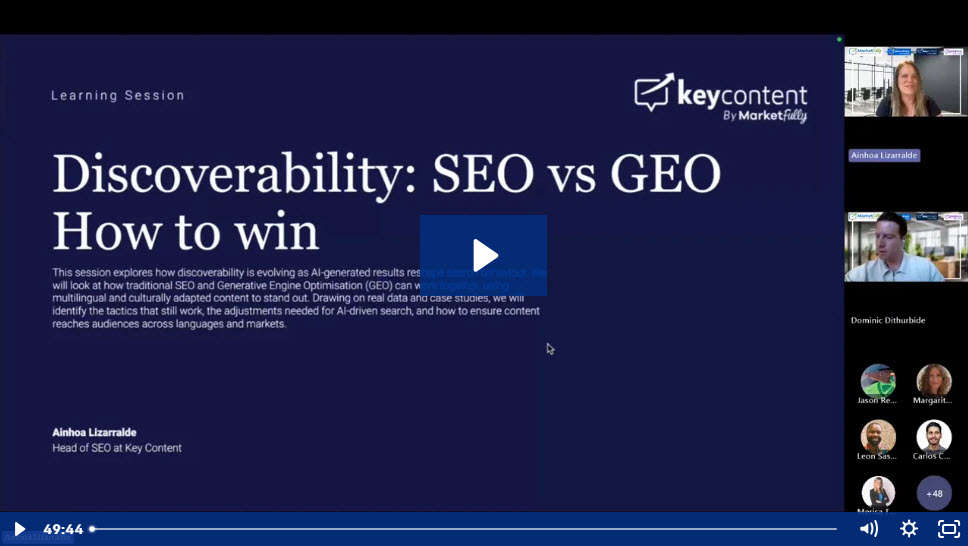The author’s mark: building trust and visibility in an AI-powered search era
The digital search landscape seems to be shifting under the pressure of AI, but not necessarily for the bad. There are generative answers and chatbots now vying for attention alongside classic search results, raising fresh questions about trust. Today’s readers and algorithms are looking for transparency and authority in content sources.
Several studies show that roughly half of consumers can spot AI-written text, and many feel less engaged when the content isn’t clearly written by a human. At the same time, new AI search tools often fail to cite sources accurately, which limits confidence in their quick answers. In this climate, where the content comes from matters more than ever. Readers want to know who wrote it, and why to trust it.
Google’s guidance echoes this and even in AI’s age, it recommends clear author bylines where readers expect to see them. In short, AI has reshaped how we discover content but it has also intensified, rather than replaced, the need for human trust signals.
E-E-A-T everywhere is quality without borders
Google’s made it clear that EEAT (Experience, Expertise, Authoritativeness, Trustworthiness) isn’t optional anymore, and is no longer confined to health or finance. Google’s updates reward content created by real experts, like the March 2024 core update that aggressively deindexed sites filled with generic AI content, highlighting a crackdown on anything that fails to meet E-E-A-T standards.
Likewise, the Helpful Content update emphasised that “authoritative content” must provide genuine value and often prioritises pieces by knowledgeable creators. Many industry analysts note that as AI takes over basic answers, brands must double down on their quality signals. Other experts point out that to stay competitive, companies will need high-quality, authoritative content and factors like EEAT even more than before.
Search experts agree, saying even AI-driven answer boxes prioritise the same characteristics as traditional results, so following EEAT guidelines is still crucial. In practice, this means applying EEAT across all industries, whether you’re writing about travel, technology, or toys. Readers and algorithms still look for clear evidence that authors really know their stuff.
Genuine expertise and what author credibility looks like
What does real author credibility look like in action?
Think about Dogster.com, a pet advice site that Google rates highly. Each published article is written by someone with verified credentials, like veterinarians, certified trainers, and other dog experts, and highlighted on the page. Dogster also gives readers clear bylines, author bios, and expert review disclaimers. This transparency tells users (and Google’s quality raters) that the information comes from a qualified source.
Google’s guidelines explicitly note that “the credibility and background of authors are critical in evaluating page quality.”. In other words, it’s not enough that your content is correct, what matters most is who wrote it, and what they’ve done. Any SEO practitioner worth their salt will want to, or advise you to, mimic this approach.
Key Content’s editorial process, for example, hinges on Google’s EEAT principles, including its teams of writers that are chosen for experience and expertise, and create full author profiles. The company notes that a well-written author bio with degrees, certifications, awards, and a history of publications can improve the perceived credibility of the content.
Some of the best practices include listing relevant qualifications and industry training, linking to other work by the author, and even adding a professional headshot and social links on bio pages. All these elements collectively show that a real person with genuine expertise is who’s creating your content.
Why does named authorship matter?
Named authorship is as much a ranking and trust factor as it is a nice little pat on the back for the author. Google’s evaluators look at the author’s reputation to gauge trustworthiness, and research shows a direct correlation between high-authority authors and better search rankings. Pages written by credible experts tend to be favoured by algorithms because search engines use authorship as a signal. An article with a verifiable, respected author gets a look, while anonymous or bot-generated content does not.
When it comes to engaging human readers, the bylines are where you build confidence. When visitors find a name, a title, and a link to an author profile, they instinctively trust the content more.
Let’s use the Dogster model again. When readers see each article’s author, and know that person is qualified to write the article, they trust the information, because they know it was vetted by a veterinarian/other expert.
Google agrees, advising that “each website and web page should clearly state who wrote the content,” since the creator’s reputation is a part of page quality. This means you’ll need to give every piece of content a clear author name, with a link to the author’s page, and for news organisations, Google wants bylines.
Over time, consistent authorship can build a writer’s own “content island” of expertise. When other sites or platforms begin to cite that author’s work or quote their ideas, it reinforces the author’s authority. At the end of the day, when you put real names on content, that links the content to real reputations and instils trust in the reader, which is the ideal SEO foundation.

Structuring expertise and data & discovery
Structured signals light the way to expertise for AI engines and traditional search crawlers. Having an expert author isn’t enough, you also need to tell the machines who the expert is, using things like schema markup and structured content.
Google’s documentation now explicitly recommends using author markup so the search engine can disambiguate authors properly. This means adding a Person schema to author profiles and an author property with a unique URL to each Article. Google added a new author.url property, precisely to help it map content to the correct author.
Outside of the markup elements, content from experts forms the “source material” AI relies on, with large language models and AI overviews learning from the raw content online, with detailed, informative pages authored by experts being fed into those models.
Foundational SEO content, press coverage, and reviews from respected publications become the dataset that AI uses to answer questions. AI systems are designed to favour information from sources with strong EEAT signals.
In short, well-structured, expert-driven content that’s attributed clearly and rich in context makes itself more visible in traditional searches as well as AI-powered answers.
Architecting author credibility for signals at scale
How can a growing organisation put these ideas into practice at scale?
First, create strong author profiles on your site, with each page including the person’s professional bio, credentials, photo, and links to their work. You must use structured data on those pages to tag fields like name, affiliation, and social profiles (e.g. Use JSON-LD for a Person type).
Likewise, mark up every content page with its author(s) using Article schema so search engines know exactly who wrote it. Keep author bios updated with new certifications, awards, or notable projects.
External author signals are another level to explore, like encouraging your experts to publish guest posts on industry sites or to speak at conferences, and mention these activities on author pages. Something we at Key Content advise is, that “authors [should] contribute to reputable industry publications and participate in webinars” to expand recognition.
Social proof is another thing that matters. Go out and collect quotes, endorsements, or testimonials from recognised figures about your authors or their content. This creates a ripple effect, so, as authors gain third-party visibility and inbound links, their personal authority grows.
Finally, monitor and refine your content regularly by using analytics and social listening to track how each author’s content performs, and look for ranking or engagement shifts when new author credibility signals (like a rich bio or a structured-data update) are added.
Over time, this approach will integrate author credibility into your SEO architecture so it’s easier for real-world readers to trust your content, as well as AI-powered systems.

Human touch is the final content polishing flourish
When all is said and done, trust in authors or content begins and ends with humans. Even the most advanced AI tools are only as good as the experts guiding them. Google explicitly warns that AI content “should be evaluated for accuracy, usefulness, and compliance” and advises against publishing it “without human review and editing.”.
You can use AI to draft or outline your content, but, a knowledgeable person fact-checking, refining, and adding personal experience is an absolute must. As one marketer notes in the Search Engine Journal, as AI usage surges “the most important element of a marketing campaign should be the human touch.”.
A seasoned writer can turn an AI draft into a nuanced, engaging narrative by inserting insight, empathy, and clarity that AI lacks. Humans provide the storytelling flair and domain context that E-E-A-T demands.
In this way, technology augments the process, but it’s the human element that makes sure content truly meets the standard. By staking content on real experts and making their authority plain, brands earn the trust of search engines and users, which has never been more precious than in today’s AI-powered world.





